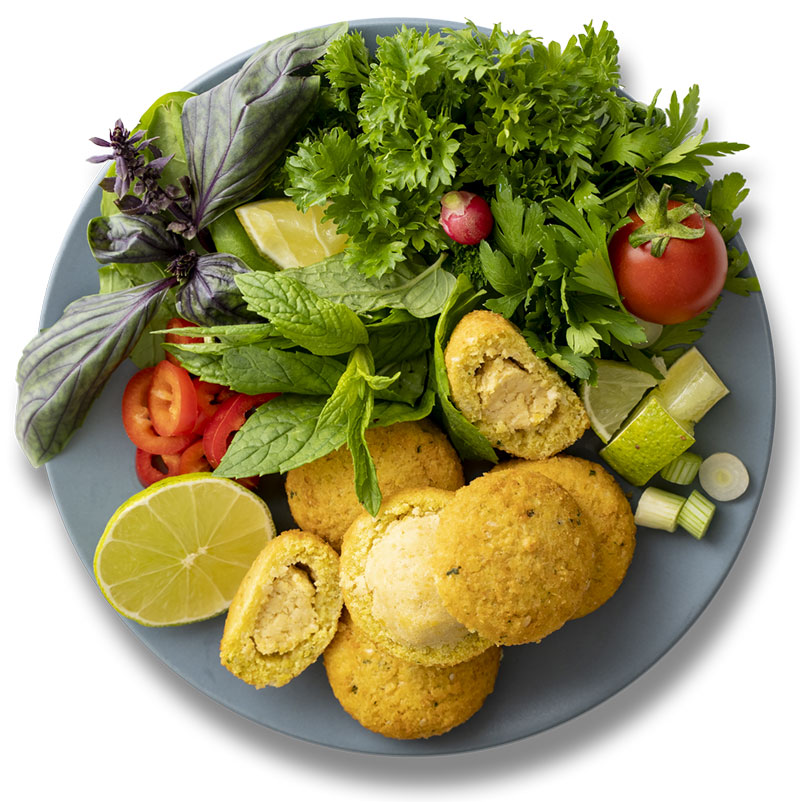The protein-rich, vegan-friendly falafel dates back to the pharaonic period. Falafel has become a global street food that replaces meat, and transcended the borders of the Middle East. It is usually served with salad, pickled vegetables, tahini and spicy sauces. A traditional dish of Egypt and the Middle East, falafel has made its way to the palates of the whole world. You can consume falafel on its own as a starter or serve it as an appetizer on large plates.
The word falafel is originated from the Arabic word “falafil”, the plural form of “filfil” which means pepper. This word has spread to many other cultures and has been used to mean “small round balls”. “Falafil”, which is considered the Arabic equivalent of this dish, began to be used in English after 1941. In Egypt, falafel is called “taʿamiya”, which means “little delicious thing”.
The generally accepted theory about the origin of falafel is that it dates back 4,000 years. It was a dish that the Copts, Egyptian Christians, consumed instead of meat during Lent. The Lent lasts about 6 weeks, and since it was forbidden to eat products such as meat, eggs and fish during the Lent in ancient times, it became compulsory to find a substitute for meat. This tradition is practiced during Lent, a religious holiday, because it is believed that humanity was originally vegetarian.
After the creation of falafel, it was easier for the dish to spread to other regions due to Alexandria being a port city. Thus, chickpeas replaced broad beans in falafel production and spread to the Eastern Mediterranean. Falafel is not only a traditional dish, but also an important vegan food. Since protein rate is very high and fat rate of low, it is often included in the menu of dieters.
Consumed as street food and snack in the Middle East, falafel is part of the iftar meal during Ramadan. In Egypt, Copts still make large quantities of falafel during religious holidays. Falafel is considered one of the national dishes of Palestine, Egypt and Israel and occasionally causes controversy between these countries. Playing an iconic role in Israeli cuisine, falafel is frequently consumed by Mizrahi Jews, although it is not inherently a Jewish dish. This is because falafel is a plant-based food and compatible with Jewish strict dietary rules. Falafel is made from chickpeas or broad beans, and in some cases a mixture of the two is used. While the chickpea version is more common in Middle Eastern countries such as Syria, Lebanon, Jordan, Israel and Palestine, in Egypt it is made only from broad beans.


